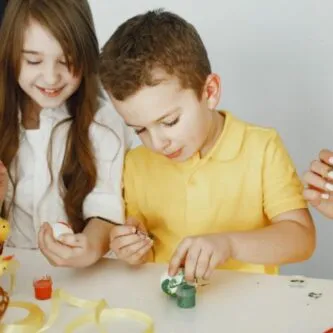
For both parents and students, preparing for exams can be difficult. The sheer volume of information they need to know can be enough to make your child feel overwhelmed and unmotivated to study.
As a parent, one of the things you can do is to teach several effective memorization techniques to your child. These techniques will help your child study more efficiently. With your assistance, they would be better equipped with methods and information which they can retain to help them on the day of their test.
Continue reading to learn more about the different memorization strategies you can practice with your child.
Using mnemonics
Teaching your child the most common mnemonics not only makes it easier for them to retain information but also provides them with a fun way of learning things.
Different kinds of tried and tested approaches can be found on the internet. Search for one that works best for your child. For example, if your child has an upcoming biology exam which requires them to memorize the order of taxonomy, there are many mnemonics you can use. The most popular one would arguably be King Phillip Came Over From Great Spain. This group of words is a mnemonic for the taxonomy order of Kingdom, Phylum, Class, Order, Family, Genus, Species.
You can get creative with your child and come up with your own mnemonic. The most important factor to remember is that it helps them memorize better through letter association.
Break information into manageable pieces
When your child is preparing for exams, it would be helpful for you to understand that they’re not just preparing for one subject. They have to be able to store large pockets of information for multiple fields of learning.
As mentioned before, this can get overwhelming for the students. For example, if you have a child who has yet to memorize the multiplication table, instead of having them complete the entire multiple of nine in one sitting, help them do this in manageable portions.
You may begin with grouping the multiple of nine in three chunks, such as 9, 18, 27 and so on. Have them commit these first three to memory before moving on to another group of three.
This way, you are allowing your child to retain pieces of information in more manageable sizes.
Conduct post-tests
Another way you can help your child memorize better is to conduct post-tests after every study session. This is a great way for you to gauge how much your child has already learned and also to target potential areas for improvement.
Post-tests are effective for virtually any kind of subject. But to give an example, we can take the case of a history subject. History greatly relies on places, names, events, dates, and the like. After every history study session with your child, you can draft a slightly comprehensive mock-up exam they can take.
Post-tests can not only immerse your child in the situation of taking the actual exam, but also helps them to understand better the areas they need to work on some more.
Repetition
Finally, one common way to help your child memorize their lessons better is by having them repeat whatever they are learning. Repetition allows them to more seamlessly incorporate the information into their brain.
One technique with repetition is to begin with the most difficult information to remember. This way, they won’t have to expend much of their energy memorizing other kinds of details that can easily be remembered.
Key Takeaway
You can try these memorization techniques with your child to better help them be ready on the day of their exams. With endless patience and practice, your child would be able to easily remember what they’re studying.
The guide above has presented merely some of the many memorization strategies. You can either use all of them in combination, or you can stick to a method which works best for you and your child.






-logo.png)



